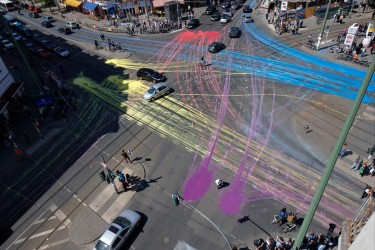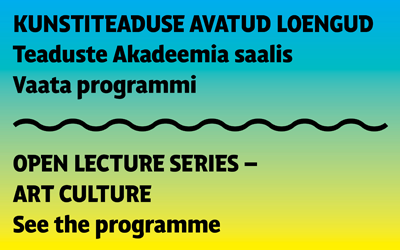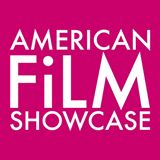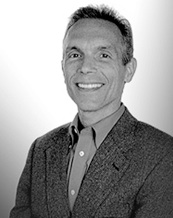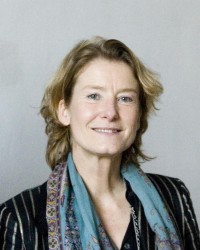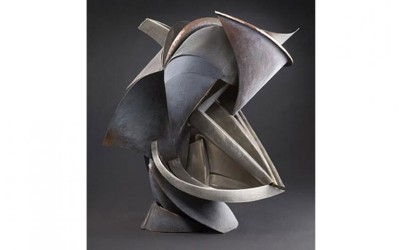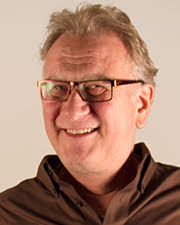Open Lectures
26.02.2016
Wild Talks at Interior Architecture Department
This Friday, we kick off WILD TALKs, the new public lecture series of our department. The speakers of the series could be characterised by two main threads of action. Some of them have created as much havoc as an elk would, wandering into a city, just by ignoring general customs and habits. Others have unearthed things about life by closely studying the periphery. Summing this up, we believe that these speakers have the potential to spark inspiration in not only interior architecture students, but anyone with any relationship to space around them.
First on the WILD TALKs stage will be Berlin-based Dutch guerilla artist IEPE RUBINGH who dumped 500 litres of paint on Rosenthaler Platz, turning the intersection into a huge canvas and making Berliners guess for months whether this was a ‘Guerrilla Advertising Campaign’ or an artwork. Additionally, he is the inventor of the hybrid sport ‘Chess Boxing’ and is the director of the World Chess Boxing Organisation, with clubs in Siberia, London, Los Angeles and Berlin.
In addition to being the opening speaker for WILD TALKs, Rubingh will also run a workshop for the MA course Wild Studio at the interior architecture department.
WILD TALKs is supported by Astelpajunaps and Valmiermuiža. All talks will be in English.
Wild Talks at Interior Architecture Department
Friday 26 February, 2016
This Friday, we kick off WILD TALKs, the new public lecture series of our department. The speakers of the series could be characterised by two main threads of action. Some of them have created as much havoc as an elk would, wandering into a city, just by ignoring general customs and habits. Others have unearthed things about life by closely studying the periphery. Summing this up, we believe that these speakers have the potential to spark inspiration in not only interior architecture students, but anyone with any relationship to space around them.
First on the WILD TALKs stage will be Berlin-based Dutch guerilla artist IEPE RUBINGH who dumped 500 litres of paint on Rosenthaler Platz, turning the intersection into a huge canvas and making Berliners guess for months whether this was a ‘Guerrilla Advertising Campaign’ or an artwork. Additionally, he is the inventor of the hybrid sport ‘Chess Boxing’ and is the director of the World Chess Boxing Organisation, with clubs in Siberia, London, Los Angeles and Berlin.
In addition to being the opening speaker for WILD TALKs, Rubingh will also run a workshop for the MA course Wild Studio at the interior architecture department.
WILD TALKs is supported by Astelpajunaps and Valmiermuiža. All talks will be in English.
27.01.2016 — 26.05.2016
Art History & Centre of Contemporary Art Open Lecture Series
Insitute of Art History and Centre of Contemporary Art, Estonia
Open Lecture Series 2016
- 27. January
Joanna Figiel
(City University London)
- 17. February
Orit Gat
(Rhizome)
- 31. March
Carolyn Christov-Bakargiev
(Galleria Civica d’Arte Moderna & Castello di Rivoli )
- 20. April
Dorothea von Hantelmann
(Berlin)
- 26. May
Jörg Heiser
(frieze d/e)
The lectures take place at the Academy of Sciences main hall at Kohtu 6, Tallinn
Start at 6 pm
Supported by Cultural Endowment of Estonia
Art History & Centre of Contemporary Art Open Lecture Series
Wednesday 27 January, 2016 — Thursday 26 May, 2016
Insitute of Art History and Centre of Contemporary Art, Estonia
Open Lecture Series 2016
- 27. January
Joanna Figiel
(City University London)
- 17. February
Orit Gat
(Rhizome)
- 31. March
Carolyn Christov-Bakargiev
(Galleria Civica d’Arte Moderna & Castello di Rivoli )
- 20. April
Dorothea von Hantelmann
(Berlin)
- 26. May
Jörg Heiser
(frieze d/e)
The lectures take place at the Academy of Sciences main hall at Kohtu 6, Tallinn
Start at 6 pm
Supported by Cultural Endowment of Estonia
09.02.2016 — 19.02.2016
Open Lecture: ORIT GAT – If it looks like zeitgeist, it might be anxiety
Estonian Academy of Arts Art History department and CCA, Estonia invite:
On Wednesday, February 17th at 6 PM prolific art writer and contributing editor of a variety of publications Orit Gat will give a public lecture ‘If it looks like zeitgeist, it might be anxiety’ at Estonian Academy of Sciences (Kohtu 6). Orit Gat will also be holding a seminar at the Institute of Art History on Friday, February 19th.
Lecture ‘If it looks like zeitgeist, it might be anxiety’
In a piece for the Guardian, Charlie Brooker, the creator of the popular Channel 4 television series about technology Black Mirror, defines the show’s setting as “the area between delight and discomfort.” Our relationship to technology is defined by a curious mix of fascination, reliance, fear, and admiration. What happens to art in this context? This talk explores the current place of art in connection to networked technology, looking into platforms for the presentation and dissemination of art online and the discourse they may or may not have created; the many recent exhibitions dedicated to art that deals with data, the internet, and technology; and what fuels these trends: the anxiety of being left behind.
Seminar ‘Being bad: on negative criticism’
Much art criticism is inherently polite. Reading a number of reviews including film, food, and art criticism, this workshop will include discussions of the role of negative critique and the position of the critic in relation to it. We’ll discuss how criticism is affected by the market and geography, and speculate on how art reviews are still useful, how they can be beneficial while still negative, and how the internet has changed the landscape of criticism. Seminar will take place at the Institute of Art History on February 19th, 10 AM, room 104. For participation please email karin.nugis@artun.ee Compulsory reading is at https://www.dropbox.com/sh/rdza2ud2631xcjh/AACxy5Zre_-3aH2Wdol9qyFUa?dl=0
Orit Gat is a writer based in New York and London. Her writing on contemporary art, publishing, internet culture, and the different meeting points between these has been published in a variety of magazines, including frieze, ArtReview, Art Agenda, Flash Art, and The Art Newspaper. Gat is the features editor of Rhizome, managing editor of WdW Review, and contributing editor at The White Review and Momus. In 2015, she won the Creative Capital/Warhol Foundation Arts Writers Grant in the short-form writing category.
The public lecture will be preceded by a reading group of Orit Gat’s texts, to be taking place on Tuesday, February 9th at 4PM at the Centre for Contemporary Art Estonia. Texts for the reading group are below. Orit Gat will also be holding a
Orit Gat’s lecture in Tallinn is part of an open lecture series organized by Estonian Academy of Arts Art History department in collaboration with CCA, Estonia. In 2016 the guests are Joanna Figiel, Orit Gat, Carolyn Christov-Bakargiev, Dorothea von Hantelmann and Jörg Heiser. Lecture series if supported by Estonian Cultural Endowment and Estonian Ministry of Culture.
Readings for the February 9th reading group:
Orit Gat talk at SuperScript 2015 https://www.youtube.com/watch?v=DMwi8_dSaug
Orit Gat, “What is an Art Critic Doing at an Art Fair?,” MOMUS. http://momus.ca/what-is-an-art-critic-doing-at-an-art-fair/
Orit Gat, The Thumbnail, FlashArt. http://www.flashartonline.com/article/the-thumbnail/
Orit Gat, The Future, WdW Review. http://wdwreview.org/sediments/future/
Open Lecture: ORIT GAT – If it looks like zeitgeist, it might be anxiety
Tuesday 09 February, 2016 — Friday 19 February, 2016
Estonian Academy of Arts Art History department and CCA, Estonia invite:
On Wednesday, February 17th at 6 PM prolific art writer and contributing editor of a variety of publications Orit Gat will give a public lecture ‘If it looks like zeitgeist, it might be anxiety’ at Estonian Academy of Sciences (Kohtu 6). Orit Gat will also be holding a seminar at the Institute of Art History on Friday, February 19th.
Lecture ‘If it looks like zeitgeist, it might be anxiety’
In a piece for the Guardian, Charlie Brooker, the creator of the popular Channel 4 television series about technology Black Mirror, defines the show’s setting as “the area between delight and discomfort.” Our relationship to technology is defined by a curious mix of fascination, reliance, fear, and admiration. What happens to art in this context? This talk explores the current place of art in connection to networked technology, looking into platforms for the presentation and dissemination of art online and the discourse they may or may not have created; the many recent exhibitions dedicated to art that deals with data, the internet, and technology; and what fuels these trends: the anxiety of being left behind.
Seminar ‘Being bad: on negative criticism’
Much art criticism is inherently polite. Reading a number of reviews including film, food, and art criticism, this workshop will include discussions of the role of negative critique and the position of the critic in relation to it. We’ll discuss how criticism is affected by the market and geography, and speculate on how art reviews are still useful, how they can be beneficial while still negative, and how the internet has changed the landscape of criticism. Seminar will take place at the Institute of Art History on February 19th, 10 AM, room 104. For participation please email karin.nugis@artun.ee Compulsory reading is at https://www.dropbox.com/sh/rdza2ud2631xcjh/AACxy5Zre_-3aH2Wdol9qyFUa?dl=0
Orit Gat is a writer based in New York and London. Her writing on contemporary art, publishing, internet culture, and the different meeting points between these has been published in a variety of magazines, including frieze, ArtReview, Art Agenda, Flash Art, and The Art Newspaper. Gat is the features editor of Rhizome, managing editor of WdW Review, and contributing editor at The White Review and Momus. In 2015, she won the Creative Capital/Warhol Foundation Arts Writers Grant in the short-form writing category.
The public lecture will be preceded by a reading group of Orit Gat’s texts, to be taking place on Tuesday, February 9th at 4PM at the Centre for Contemporary Art Estonia. Texts for the reading group are below. Orit Gat will also be holding a
Orit Gat’s lecture in Tallinn is part of an open lecture series organized by Estonian Academy of Arts Art History department in collaboration with CCA, Estonia. In 2016 the guests are Joanna Figiel, Orit Gat, Carolyn Christov-Bakargiev, Dorothea von Hantelmann and Jörg Heiser. Lecture series if supported by Estonian Cultural Endowment and Estonian Ministry of Culture.
Readings for the February 9th reading group:
Orit Gat talk at SuperScript 2015 https://www.youtube.com/watch?v=DMwi8_dSaug
Orit Gat, “What is an Art Critic Doing at an Art Fair?,” MOMUS. http://momus.ca/what-is-an-art-critic-doing-at-an-art-fair/
Orit Gat, The Thumbnail, FlashArt. http://www.flashartonline.com/article/the-thumbnail/
Orit Gat, The Future, WdW Review. http://wdwreview.org/sediments/future/
03.03.2016
Open Lecture: Dr. Michael Renov, University of Southern California: “Semiotics of Documentary and U.S. Documentary Film History”
Dr. Michael Renov from the University of Southern California will hold a public lecture titled “Semiotics of Documentary and U.S. Documentary Film History” at the Estonian Academy of Arts, Estonia pst 7, rm 426 on February 3, 2016 at 4 pm. The lecture will be in English and everyone is welcome.
Why the documentary matters? Michael Renov, professor of Critical Studies and Vice Dean for Academic Affairs from University of Southern California, author of several books about the documentary film and documentary film curator for many festivals, will be talking about the social significance of the documentary film. Dr. Renov will discuss the crucial functions served by the documentary film — preservation, persuasion, analysis and expression — with additional attention given to ethical concerns. Dr. Renov, an experienced jury member for film festivals such as Sundance, Silverdocs and many others, will also be talking about the U.S. documentary films and U.S. documentary films history.
The lecture is made possible and available thanks to the Embassy of the United States of America in Estonia.
Open Lecture: Dr. Michael Renov, University of Southern California: “Semiotics of Documentary and U.S. Documentary Film History”
Thursday 03 March, 2016
Dr. Michael Renov from the University of Southern California will hold a public lecture titled “Semiotics of Documentary and U.S. Documentary Film History” at the Estonian Academy of Arts, Estonia pst 7, rm 426 on February 3, 2016 at 4 pm. The lecture will be in English and everyone is welcome.
Why the documentary matters? Michael Renov, professor of Critical Studies and Vice Dean for Academic Affairs from University of Southern California, author of several books about the documentary film and documentary film curator for many festivals, will be talking about the social significance of the documentary film. Dr. Renov will discuss the crucial functions served by the documentary film — preservation, persuasion, analysis and expression — with additional attention given to ethical concerns. Dr. Renov, an experienced jury member for film festivals such as Sundance, Silverdocs and many others, will also be talking about the U.S. documentary films and U.S. documentary films history.
The lecture is made possible and available thanks to the Embassy of the United States of America in Estonia.
03.02.2016
DESIGN OPEN LECTURE SERIES:JEROEN CARELSE / LECTURER IN AALTO UNIVERSITY, CARELSE OÜ DESIGNER AND ANALYSIST
3.02 Jeroen Carelse / lecturer in Aalto University, Carelse OÜ designer and analysist.
Mixing research+art+business. Extrasensory Perception & Design, Imagination, Intuition and creativityAuthenticity and creativity. What does it mean to be authentic and how does one become authentic? Does authenticity result in creativity? Are there differences in art and design that comes from the place of authenticity?
DESIGN OPEN LECTURE SERIES:JEROEN CARELSE / LECTURER IN AALTO UNIVERSITY, CARELSE OÜ DESIGNER AND ANALYSIST
Wednesday 03 February, 2016
3.02 Jeroen Carelse / lecturer in Aalto University, Carelse OÜ designer and analysist.
Mixing research+art+business. Extrasensory Perception & Design, Imagination, Intuition and creativityAuthenticity and creativity. What does it mean to be authentic and how does one become authentic? Does authenticity result in creativity? Are there differences in art and design that comes from the place of authenticity?
24.03.2016
Open Day March 24, 2016
The Open Day at the Estonian Academy of Arts will take place on March 24, 2016 from 10am-6pm. If you are a foreign student and need guidance in English, please contact admissions@artun.ee to register for a tour. The programme is posted in Estonian here: https://www.artun.ee/x/avatuduksed/kava/
Open Day March 24, 2016
Thursday 24 March, 2016
The Open Day at the Estonian Academy of Arts will take place on March 24, 2016 from 10am-6pm. If you are a foreign student and need guidance in English, please contact admissions@artun.ee to register for a tour. The programme is posted in Estonian here: https://www.artun.ee/x/avatuduksed/kava/
27.01.2016 — 29.01.2016
OPEN LECTURE: Joanna Figiel public lecture on artistic work
Joanna Figiel public lecture on artistic work
———————————————————————————-
On Wensday, January 27th 6PM we are pleased to host Joanna Figiel (London City University) who will hold an open lecture on artistic work. The lecture will take place at the main hall of Estonian Academy of Sciences, Kohtu 6.
„This short lecture will attempt to overview, and engage with, the vast array of issues faced – currently and historically – by those trying to make a living, pursue a meaningful career or simply survive in the sphere of artistic, cultural and creative work.
What does it mean to work as an artist? What does it mean to work as a female artist?
What is the class composition of artistic and cultural work? What are the lived realities of production for creative workers and different forms of subjectivation occurring in forms of creative labour? How does artistic labour function as a form of authentic self-expression?
To ask and engage with the above, as well as other related questions, I will firstly look at the general history of art workers movements, ideologies and politics, and further turn to a number of recent projects exploring and engaging with these issues.
To name a few, I will:
-bring together existing accounts addressing the politics of cultural and creative work and the findings of the “Metropolitan Factory” research project, developed in collaboration with S.Shukaitis.
-discuss the work of Citizens Forum for Contemporary Arts in Warsaw, Poland and the subsequent publication of the “Black Book of Work in the Arts” of which I was co-editor. (“Czarna Ksiega Polskich Artystow”)
-summarize a portion of findings from the recently completed, 2-year long, “Art Factory” research project of the Free/Slow University of Warsaw examining the distribution of capital(s) in Polish art-world, with the specific focus on issues of female workers and artists
-look back at the ongoing practices and shared tools developed by the Carrotworkers Collective and the Precarious Workers Brigade in London, UK.
Finally, I will give some examples of how we can take responsibility – but whose responsibility is it? – to step out for art workers’ rights and working conditions in the current political climate of neoliberalism and generalized precarity.“
Joanna Figiel is a doctoral candidate at the Centre for Culture Policy Management, City University, London. Her research focuses on the changing compositions of labour, precarity, and policy in the creative and cultural sectors. She completed her MA at the Centre for Cultural Studies, Goldsmiths. Joanna is a member of the editorial collective of the journal ephemera: theory and politics in organization, organizes with groups including the Citizen’s Forum for Contemporary Art in Poland and PWB in the UK, and collaborates with Free/Slow University of Warsaw and the ArtLeaks collective. She recently completed work on a special issue of a journal dedicated to workers’ inquiry and a collective research project exploring the practicalities of making a living as a creative worker in the city.
——————————————————————————————
A workshop about the relationships of art and work.
——————————————————————————————
Joanna Figiel and Airi Triisberg will also be holding a workshop at the Institute of Art History on January 29th, 10.15 AM (Suur-Kloostri 11, room 103). For participation please email to Rebeka Põldsam (rebeka@cca.ee)
In this workshop, we will discuss how the problems of precarious labour are manifested and contested in the context of contemporary art practice. By examining examples of labour organising in the art field, we will discuss how precarity is addressed and conceptualised by art and cultural workers.
The workshop will focus on two themes in particular. In the first part, we will discuss how art workers relate to the modes of subjectivation that are typical to neoliberal economy. In this context, we will ask what is the role of art education in shaping these subjectivities and how could the imperatives of competition and individuality be contested. How can we manage our individual expectations and ambitions vs the reality of the art world/art economy, individuality vs collectivity ?
In the second part of the workshop we will look at concrete practices and strategies used by art workers initiatives that are currently active. What kind of tools do art workers use when seeking to change precarious working conditions in their local contexts? Which strategies are successful and where are their limits?
Recommended reading
Maarin Mürk, Maria-Kristiina Soomre, Airi Triisberg, Kõigepealt saame rikkaks, siis hakkame õiglaseks?
http://www.sirp.ee/s1-artiklid/c6-kunst/koigepealt-saame-rikkaks-siis-hakkame-oiglaseks/
Precarious Workers Brigade, Training for Exploitation? Towards an alternative curriculum
Training For Exploitation? Towards an alternative curriculum
Joanna Figiel, On the Citizen Forum for Contemporary Arts
https://artsleaks.files.wordpress.com/2012/09/joanna_figiel_artleaks_gazette_2.pdf
Airi Triisberg, Art Workers Movement in Tallinn: the Politics of Disidentification
www.art-workers.org
Art Factory Polish survey/ report excerpt http://issuu.com/beczmiana/docs/the_art_factory
Further readings:
Airi Triisberg’s -Estonian text about the recent organising in Estonia
PWB Alternative Curriculum ? https://carrotworkers.wordpress.com/2012/05/02/training-for-exploitation-towards-an-alternative-curriculum/
Counter-internship guide ? https://carrotworkers.wordpress.com/counter-internship-guide/
Citizen forum https://artsleaks.files.wordpress.com/2012/09/joanna_figiel_artleaks_gazette_2.pdf
WAGE?
Bulletpoints to think about:
thinking of ones artistic practice as labor, are artist workers?
artist income
content of their art academies’ curriculum
expectations vs reality of the art world/art economy
precarity
competition vs individuality
internalisig/personalising systemic issues
collectivity? do artists and collectives work? what are the limits of collectivity? issues/limits of unionising
burnout/work-life balance
Possible steps:
– working through examples of practices and initiatives. can we examine them critically?
– creating a problem list / offering ideas for a toolbox – creating a toolbox together?
– mapping precarity
OPEN LECTURE: Joanna Figiel public lecture on artistic work
Wednesday 27 January, 2016 — Friday 29 January, 2016
Joanna Figiel public lecture on artistic work
———————————————————————————-
On Wensday, January 27th 6PM we are pleased to host Joanna Figiel (London City University) who will hold an open lecture on artistic work. The lecture will take place at the main hall of Estonian Academy of Sciences, Kohtu 6.
„This short lecture will attempt to overview, and engage with, the vast array of issues faced – currently and historically – by those trying to make a living, pursue a meaningful career or simply survive in the sphere of artistic, cultural and creative work.
What does it mean to work as an artist? What does it mean to work as a female artist?
What is the class composition of artistic and cultural work? What are the lived realities of production for creative workers and different forms of subjectivation occurring in forms of creative labour? How does artistic labour function as a form of authentic self-expression?
To ask and engage with the above, as well as other related questions, I will firstly look at the general history of art workers movements, ideologies and politics, and further turn to a number of recent projects exploring and engaging with these issues.
To name a few, I will:
-bring together existing accounts addressing the politics of cultural and creative work and the findings of the “Metropolitan Factory” research project, developed in collaboration with S.Shukaitis.
-discuss the work of Citizens Forum for Contemporary Arts in Warsaw, Poland and the subsequent publication of the “Black Book of Work in the Arts” of which I was co-editor. (“Czarna Ksiega Polskich Artystow”)
-summarize a portion of findings from the recently completed, 2-year long, “Art Factory” research project of the Free/Slow University of Warsaw examining the distribution of capital(s) in Polish art-world, with the specific focus on issues of female workers and artists
-look back at the ongoing practices and shared tools developed by the Carrotworkers Collective and the Precarious Workers Brigade in London, UK.
Finally, I will give some examples of how we can take responsibility – but whose responsibility is it? – to step out for art workers’ rights and working conditions in the current political climate of neoliberalism and generalized precarity.“
Joanna Figiel is a doctoral candidate at the Centre for Culture Policy Management, City University, London. Her research focuses on the changing compositions of labour, precarity, and policy in the creative and cultural sectors. She completed her MA at the Centre for Cultural Studies, Goldsmiths. Joanna is a member of the editorial collective of the journal ephemera: theory and politics in organization, organizes with groups including the Citizen’s Forum for Contemporary Art in Poland and PWB in the UK, and collaborates with Free/Slow University of Warsaw and the ArtLeaks collective. She recently completed work on a special issue of a journal dedicated to workers’ inquiry and a collective research project exploring the practicalities of making a living as a creative worker in the city.
——————————————————————————————
A workshop about the relationships of art and work.
——————————————————————————————
Joanna Figiel and Airi Triisberg will also be holding a workshop at the Institute of Art History on January 29th, 10.15 AM (Suur-Kloostri 11, room 103). For participation please email to Rebeka Põldsam (rebeka@cca.ee)
In this workshop, we will discuss how the problems of precarious labour are manifested and contested in the context of contemporary art practice. By examining examples of labour organising in the art field, we will discuss how precarity is addressed and conceptualised by art and cultural workers.
The workshop will focus on two themes in particular. In the first part, we will discuss how art workers relate to the modes of subjectivation that are typical to neoliberal economy. In this context, we will ask what is the role of art education in shaping these subjectivities and how could the imperatives of competition and individuality be contested. How can we manage our individual expectations and ambitions vs the reality of the art world/art economy, individuality vs collectivity ?
In the second part of the workshop we will look at concrete practices and strategies used by art workers initiatives that are currently active. What kind of tools do art workers use when seeking to change precarious working conditions in their local contexts? Which strategies are successful and where are their limits?
Recommended reading
Maarin Mürk, Maria-Kristiina Soomre, Airi Triisberg, Kõigepealt saame rikkaks, siis hakkame õiglaseks?
http://www.sirp.ee/s1-artiklid/c6-kunst/koigepealt-saame-rikkaks-siis-hakkame-oiglaseks/
Precarious Workers Brigade, Training for Exploitation? Towards an alternative curriculum
Training For Exploitation? Towards an alternative curriculum
Joanna Figiel, On the Citizen Forum for Contemporary Arts
https://artsleaks.files.wordpress.com/2012/09/joanna_figiel_artleaks_gazette_2.pdf
Airi Triisberg, Art Workers Movement in Tallinn: the Politics of Disidentification
www.art-workers.org
Art Factory Polish survey/ report excerpt http://issuu.com/beczmiana/docs/the_art_factory
Further readings:
Airi Triisberg’s -Estonian text about the recent organising in Estonia
PWB Alternative Curriculum ? https://carrotworkers.wordpress.com/2012/05/02/training-for-exploitation-towards-an-alternative-curriculum/
Counter-internship guide ? https://carrotworkers.wordpress.com/counter-internship-guide/
Citizen forum https://artsleaks.files.wordpress.com/2012/09/joanna_figiel_artleaks_gazette_2.pdf
WAGE?
Bulletpoints to think about:
thinking of ones artistic practice as labor, are artist workers?
artist income
content of their art academies’ curriculum
expectations vs reality of the art world/art economy
precarity
competition vs individuality
internalisig/personalising systemic issues
collectivity? do artists and collectives work? what are the limits of collectivity? issues/limits of unionising
burnout/work-life balance
Possible steps:
– working through examples of practices and initiatives. can we examine them critically?
– creating a problem list / offering ideas for a toolbox – creating a toolbox together?
– mapping precarity
24.03.2016
Open Day March 24, 2016
The Estonian Academy of Arts will hold an Open Day for all interested prospective students and others on March 24th, 2016. All lectures are open for visitors as well as there will be exhibits, information hours in departments and other activities. All are welcome! More information will be available soon.
Open Day March 24, 2016
Thursday 24 March, 2016
The Estonian Academy of Arts will hold an Open Day for all interested prospective students and others on March 24th, 2016. All lectures are open for visitors as well as there will be exhibits, information hours in departments and other activities. All are welcome! More information will be available soon.
17.12.2015
Beatrice von Bismarck open lecture
On Thursday, December 17th 6PM we are pleased to host curator and professor of Academy of Visual Arts Leipzig Beatrice von Bismarck who will hold an open lecture „Valorisation Machines or The Exhibition as (Re-)Staging: “When Attitudes Become Form – Bern 1969/ Venice 2013”, Venice Biennial 2013“. The lecture will take place at the main hall of Estonian Academy of Sciences, Kohtu 6.
Exhibitions are in general performative. They bring their exhibits on stage by making them public. Furthermore they involve them in a process of meaning production through embedding them into new constellations. Over the course of processes of shifts and transpositions, additions and commentaries they create different relations between the exhibits and other objects on show as well as display devices, sites and spaces, people and discourses. Exhibitions are thus always temporally defined and this through the temporary structure of their exhibits as much as through their own rhythms, processes and duration.
With the exhibition “When Attitudes Become Form” (Bern, 1969) process and ephemerality have been inscribed not only into the history of art but also into the rather younger history of exhibitions. While a number of other curatorial initiatives around the late 1960s and early 1970s offered similarly oriented contributions to the discourse, the Swiss show and its curator Harald Szeemann acquired a particularly outstanding, almost legendary reputation. The re-staging of this show in 2013 in Venice at the Prada Foundation under the title of “When Attitudes Become Form -Bern 1969/ Venice 2013” implied a de-contextualisation and a resulting shift of meaning not only in aesthetic terms. Hand in hand with the alterations of the temporal and material conditions of the exhibits went a number of re-valorisations and capitalizations, which affected the artistic works, but also the participating artists, the curators and the exhibition itself. The Venice exhibition can thus be treated as a paradigm not only with regards to the theatrical nature of exhibiting but also to the meaning and value production of its performative capacities.
Beatrice von Bismarck (Leipzig/ Berlin), professor at the Academy of Visual Arts Leipzig for Art History, Visual Culture and Cultures of the Curatorial. 1989 – 1993 Städel Museum, Frankfurt/Main curator 20th Century art. 1993 – 1999 Lüneburg University, co-founder and -director of the project-space „Kunstraum der Universität Lüneburg“. 2000 co-founder of the project-space „/D/O/C/K-Projektbereich“. 2009 initiator of the MA-program “Cultures of the Curatorial“. Research areas: The curatorial; effects of neo-liberalism and globalization on the cultural field; postmodern concepts of the „artist“.
Currently on research leave for a book on “The Curatorial” financed by the “Opus magnum”-program of the VWStiftung.
Publications include: – Games Fights Collaborations. Art and Cultural Studies in the 90s, Ostfildern-Ruit 1996. (ed. with Diethelm Stoller, Ulf Wuggenig); – Interarchive. Archival Practices and Sites in the Contemporary Art Field, Cologne 2002. (ed. with Hans-Peter Feldmann, Hans Ulrich Obrist, Diethelm Stoller, Ulf Wuggenig); – Grenzbespielungen. Visuelle Politik in der Übergangszone (Performing the Border. Visual Politics in Zones of Transgression), (ed.), Cologne 2005; – Globalisierung/Hierarchisierung. Kulturelle Dominanzen in Kunst und Kunstgeschichte (Globalization/ Hierarchization. Cultural Dominances in Art and Art History), Marburg 2005 (ed. with Irene Below); – beyond education. Kunst, Ausbildung, Arbeit und Ökonomie, (beyond education. Art, Education, Work and Economy), Frankfurt a. M. 2005 (ed. with Alexander Koch); – Nach Bourdieu: Visualität, Kunst, Politik (After Bourdieu. Visuality, Art, Politics), Vienna 2008 (ed. with Therese Kaufmann, Ulf Wuggenig); – Auftritt als Künstler (Performance as Artist), Cologne 2010; – Cultures of the Curatorial (ed. With Jörn Schaffaf and Thomas Weski), Berlin 2012; – Timing – On the Temporal Dimension of Exhibiting (ed. with Rike Frank, Benjamin Meyer-Krahmer, Jörn Schafaff, and Thomas Weski), Berlin 2014; – Hospitality – Hosting Relations in Exhibitions, (ed. with Benjamin Meyer-Krahmer), Berlin (about to come out in January 2016).
The public lecture will be preceded by a reading group of prof von Bismarck’s earlier texts, to be taking place on Wednesday, December 9th at 4PM at the Centre for Contemporary Art Estonia, please register rebeka@cca.ee.
Beatrice von Bismarck will also be holding a seminar at the Institute of Art History on December 18th, 10 AM, room 104. For participation please email ingrid.ruudi@artun.ee
Beatrice von Bismarck open lecture
Thursday 17 December, 2015
On Thursday, December 17th 6PM we are pleased to host curator and professor of Academy of Visual Arts Leipzig Beatrice von Bismarck who will hold an open lecture „Valorisation Machines or The Exhibition as (Re-)Staging: “When Attitudes Become Form – Bern 1969/ Venice 2013”, Venice Biennial 2013“. The lecture will take place at the main hall of Estonian Academy of Sciences, Kohtu 6.
Exhibitions are in general performative. They bring their exhibits on stage by making them public. Furthermore they involve them in a process of meaning production through embedding them into new constellations. Over the course of processes of shifts and transpositions, additions and commentaries they create different relations between the exhibits and other objects on show as well as display devices, sites and spaces, people and discourses. Exhibitions are thus always temporally defined and this through the temporary structure of their exhibits as much as through their own rhythms, processes and duration.
With the exhibition “When Attitudes Become Form” (Bern, 1969) process and ephemerality have been inscribed not only into the history of art but also into the rather younger history of exhibitions. While a number of other curatorial initiatives around the late 1960s and early 1970s offered similarly oriented contributions to the discourse, the Swiss show and its curator Harald Szeemann acquired a particularly outstanding, almost legendary reputation. The re-staging of this show in 2013 in Venice at the Prada Foundation under the title of “When Attitudes Become Form -Bern 1969/ Venice 2013” implied a de-contextualisation and a resulting shift of meaning not only in aesthetic terms. Hand in hand with the alterations of the temporal and material conditions of the exhibits went a number of re-valorisations and capitalizations, which affected the artistic works, but also the participating artists, the curators and the exhibition itself. The Venice exhibition can thus be treated as a paradigm not only with regards to the theatrical nature of exhibiting but also to the meaning and value production of its performative capacities.
Beatrice von Bismarck (Leipzig/ Berlin), professor at the Academy of Visual Arts Leipzig for Art History, Visual Culture and Cultures of the Curatorial. 1989 – 1993 Städel Museum, Frankfurt/Main curator 20th Century art. 1993 – 1999 Lüneburg University, co-founder and -director of the project-space „Kunstraum der Universität Lüneburg“. 2000 co-founder of the project-space „/D/O/C/K-Projektbereich“. 2009 initiator of the MA-program “Cultures of the Curatorial“. Research areas: The curatorial; effects of neo-liberalism and globalization on the cultural field; postmodern concepts of the „artist“.
Currently on research leave for a book on “The Curatorial” financed by the “Opus magnum”-program of the VWStiftung.
Publications include: – Games Fights Collaborations. Art and Cultural Studies in the 90s, Ostfildern-Ruit 1996. (ed. with Diethelm Stoller, Ulf Wuggenig); – Interarchive. Archival Practices and Sites in the Contemporary Art Field, Cologne 2002. (ed. with Hans-Peter Feldmann, Hans Ulrich Obrist, Diethelm Stoller, Ulf Wuggenig); – Grenzbespielungen. Visuelle Politik in der Übergangszone (Performing the Border. Visual Politics in Zones of Transgression), (ed.), Cologne 2005; – Globalisierung/Hierarchisierung. Kulturelle Dominanzen in Kunst und Kunstgeschichte (Globalization/ Hierarchization. Cultural Dominances in Art and Art History), Marburg 2005 (ed. with Irene Below); – beyond education. Kunst, Ausbildung, Arbeit und Ökonomie, (beyond education. Art, Education, Work and Economy), Frankfurt a. M. 2005 (ed. with Alexander Koch); – Nach Bourdieu: Visualität, Kunst, Politik (After Bourdieu. Visuality, Art, Politics), Vienna 2008 (ed. with Therese Kaufmann, Ulf Wuggenig); – Auftritt als Künstler (Performance as Artist), Cologne 2010; – Cultures of the Curatorial (ed. With Jörn Schaffaf and Thomas Weski), Berlin 2012; – Timing – On the Temporal Dimension of Exhibiting (ed. with Rike Frank, Benjamin Meyer-Krahmer, Jörn Schafaff, and Thomas Weski), Berlin 2014; – Hospitality – Hosting Relations in Exhibitions, (ed. with Benjamin Meyer-Krahmer), Berlin (about to come out in January 2016).
The public lecture will be preceded by a reading group of prof von Bismarck’s earlier texts, to be taking place on Wednesday, December 9th at 4PM at the Centre for Contemporary Art Estonia, please register rebeka@cca.ee.
Beatrice von Bismarck will also be holding a seminar at the Institute of Art History on December 18th, 10 AM, room 104. For participation please email ingrid.ruudi@artun.ee
16.11.2015
Jewellery and Blacksmithing Open Lecture: Jon Robert Havener Nov 16th
Kansase University metal and jewellwery professor Jon Robert Havener will give an open lecture about his works on Monday, November 16, 2015 at 6 pm.
The lecture will be held in English at the Estonian Academy of Arts, room 221 (Estonia pst 7, II floor). All who are interested, are welcome!
Jon Havener studied silver and goldsmithing at the Cleveland Art Institute in Cleveland, graduating with a B.F.A. in 1973; he got an M.F.A. in metalsmithing in 1975 at the Cranbrook Art Academy Bloomfield Hills, Mich. He has taught metalsmithing and jewelry in the design department at the University of Kansas since 1977.
Jon’s work with holloware in the early 1980s has evolved into smithed and fabricated sculpture that has been exhibited nationally in galleries and competitive exhibitions.
His work is included in various public collections: The City of Lawrence, Kan.; The City of Manhattan, Kan.; Florida A & M University; The University of Nebraska, Omaha; The United States Comptroller of Currency, Kansas City, Mo.; and the Boatman’s Bank, Clayton, Mo. His work is also featured in several private collections, notably commissioned fountains, and works on the wall.
Jon has received several awards and grants for his work, including the Regional Award in Sculpture from the Mid-American Art Allliance and The National Endowment for the Arts in 1985, five research awards from the University of Kansas, and the 1998 Kansas Artists Fellowship in Sculpture.
Jon says his work has evolved from an interest in antiquity and ancient metalwork, and frequently utilizes armor forms. “I enjoy manipulating metal into complex structures that evoke a sense of drama and history,” he says. “My sculptures are often highly gestural, expressing a turbulent energy through growth-like movements.”
https://art.ku.edu/jon-havener
Jewellery and Blacksmithing Open Lecture: Jon Robert Havener Nov 16th
Monday 16 November, 2015
Kansase University metal and jewellwery professor Jon Robert Havener will give an open lecture about his works on Monday, November 16, 2015 at 6 pm.
The lecture will be held in English at the Estonian Academy of Arts, room 221 (Estonia pst 7, II floor). All who are interested, are welcome!
Jon Havener studied silver and goldsmithing at the Cleveland Art Institute in Cleveland, graduating with a B.F.A. in 1973; he got an M.F.A. in metalsmithing in 1975 at the Cranbrook Art Academy Bloomfield Hills, Mich. He has taught metalsmithing and jewelry in the design department at the University of Kansas since 1977.
Jon’s work with holloware in the early 1980s has evolved into smithed and fabricated sculpture that has been exhibited nationally in galleries and competitive exhibitions.
His work is included in various public collections: The City of Lawrence, Kan.; The City of Manhattan, Kan.; Florida A & M University; The University of Nebraska, Omaha; The United States Comptroller of Currency, Kansas City, Mo.; and the Boatman’s Bank, Clayton, Mo. His work is also featured in several private collections, notably commissioned fountains, and works on the wall.
Jon has received several awards and grants for his work, including the Regional Award in Sculpture from the Mid-American Art Allliance and The National Endowment for the Arts in 1985, five research awards from the University of Kansas, and the 1998 Kansas Artists Fellowship in Sculpture.
Jon says his work has evolved from an interest in antiquity and ancient metalwork, and frequently utilizes armor forms. “I enjoy manipulating metal into complex structures that evoke a sense of drama and history,” he says. “My sculptures are often highly gestural, expressing a turbulent energy through growth-like movements.”
https://art.ku.edu/jon-havener

